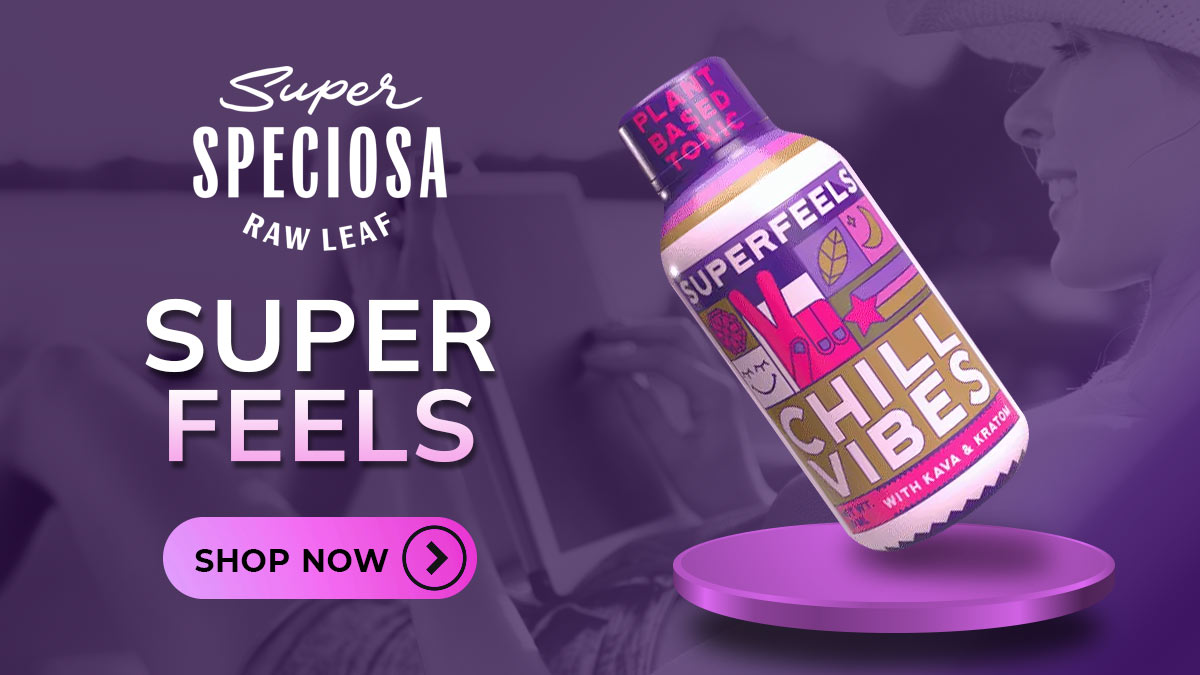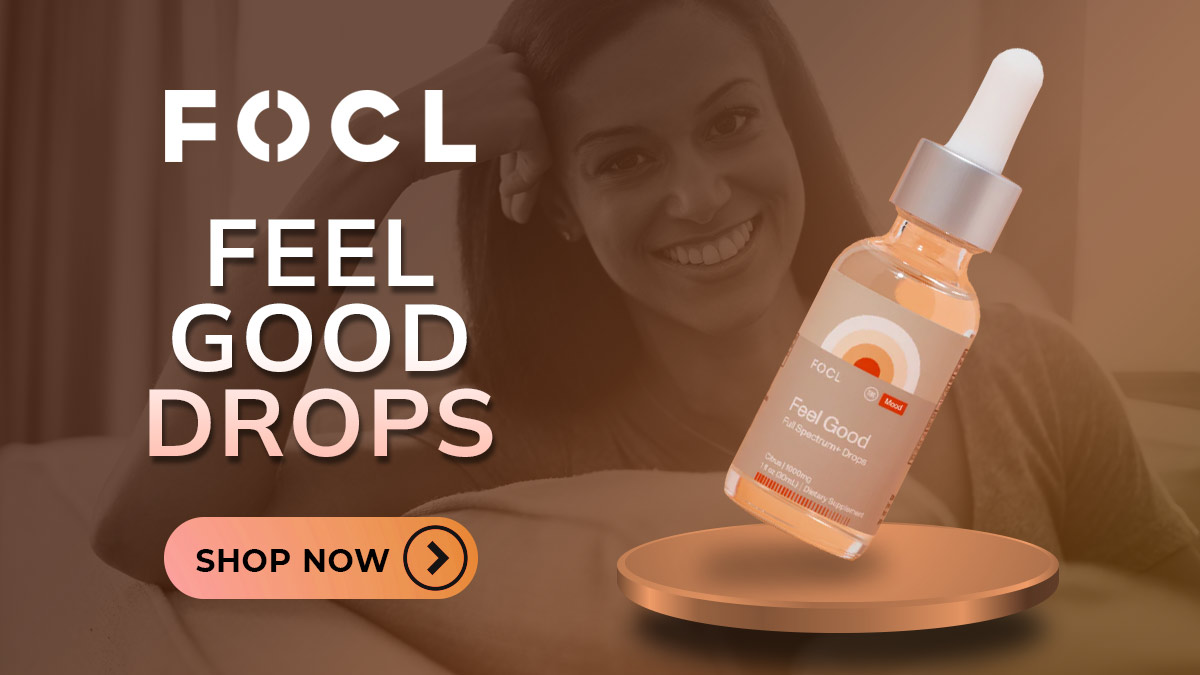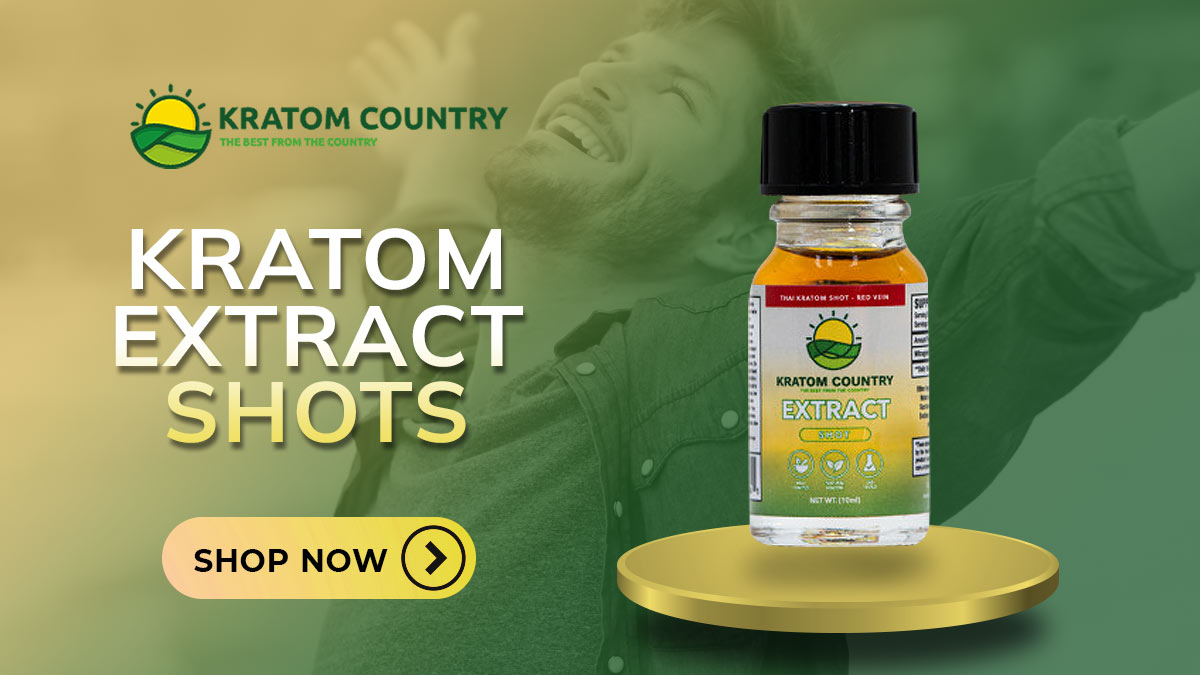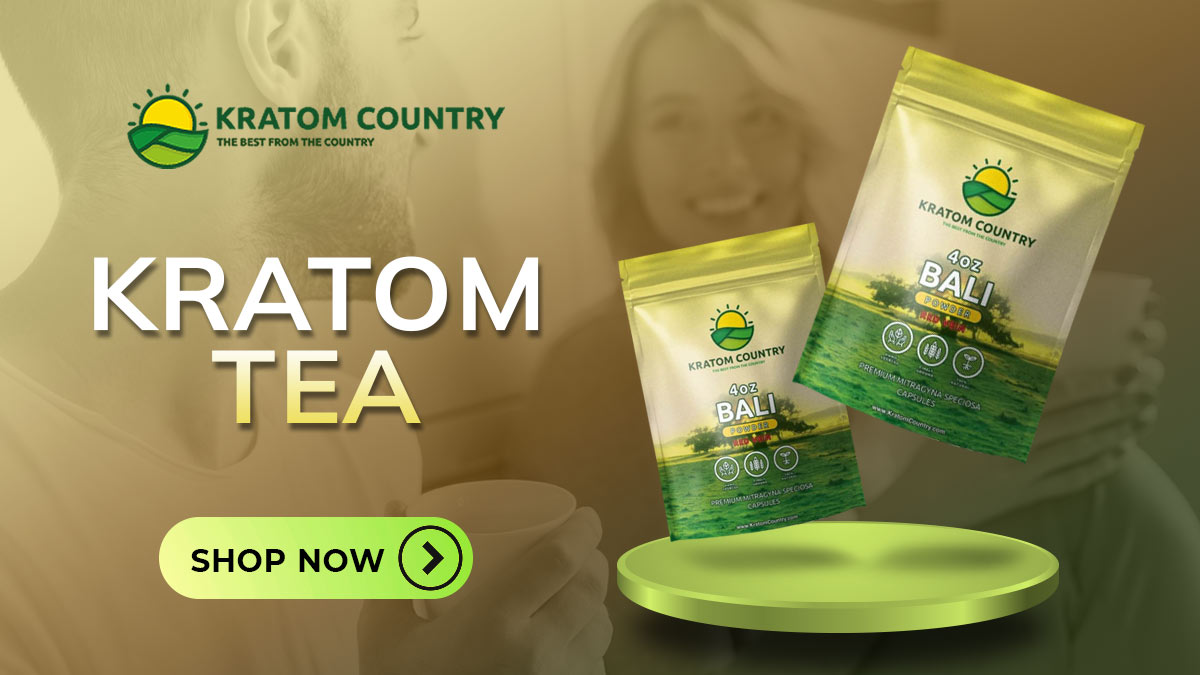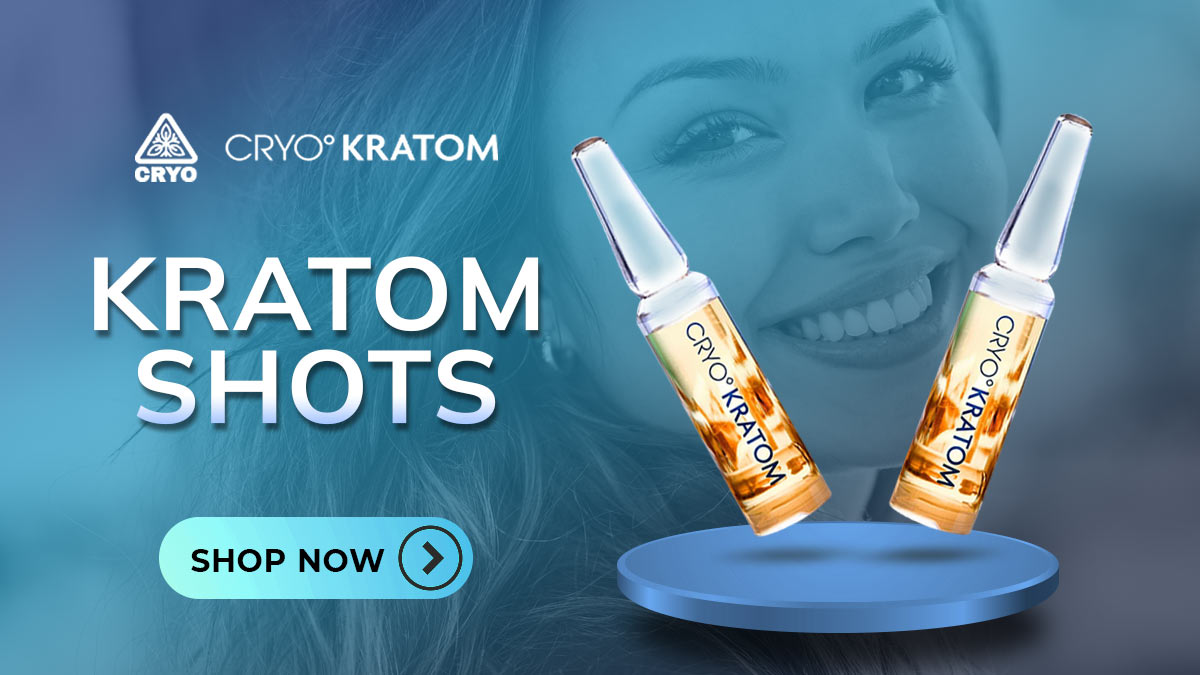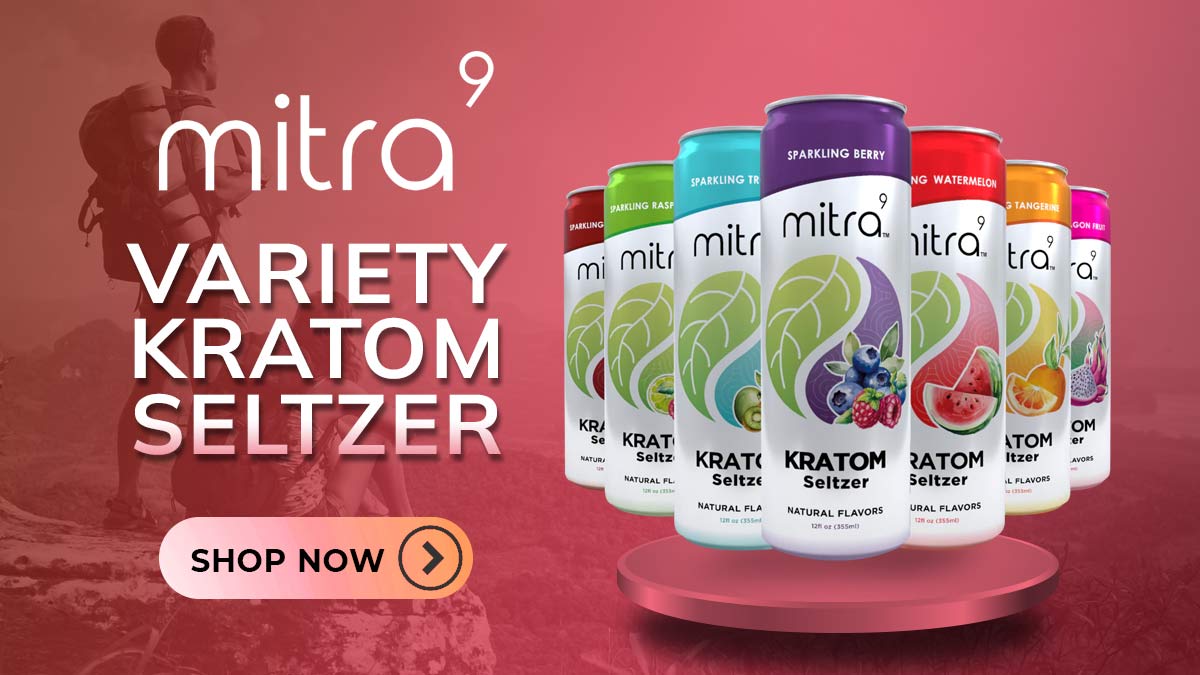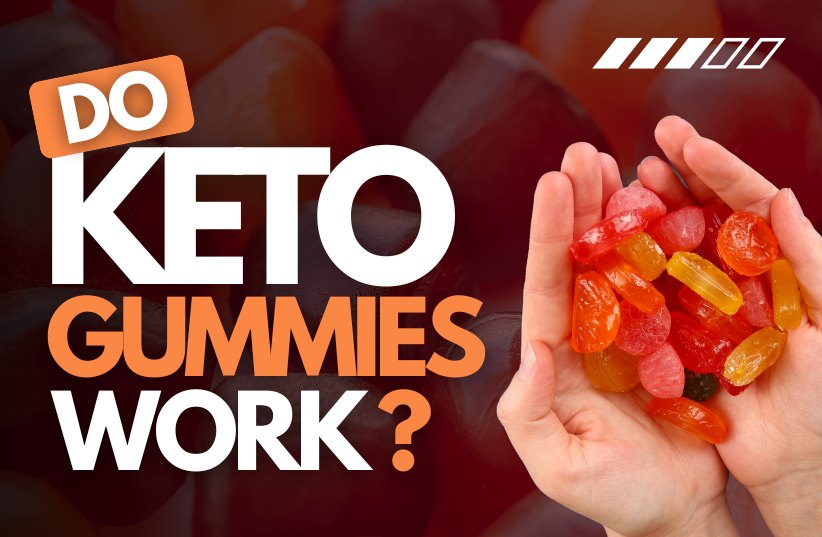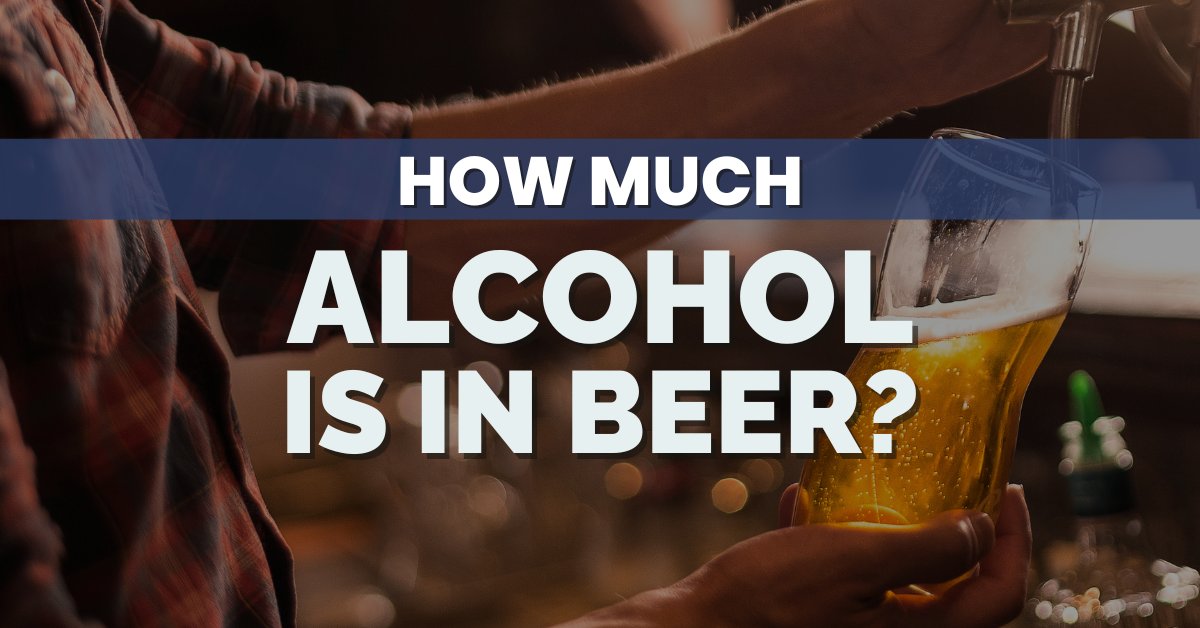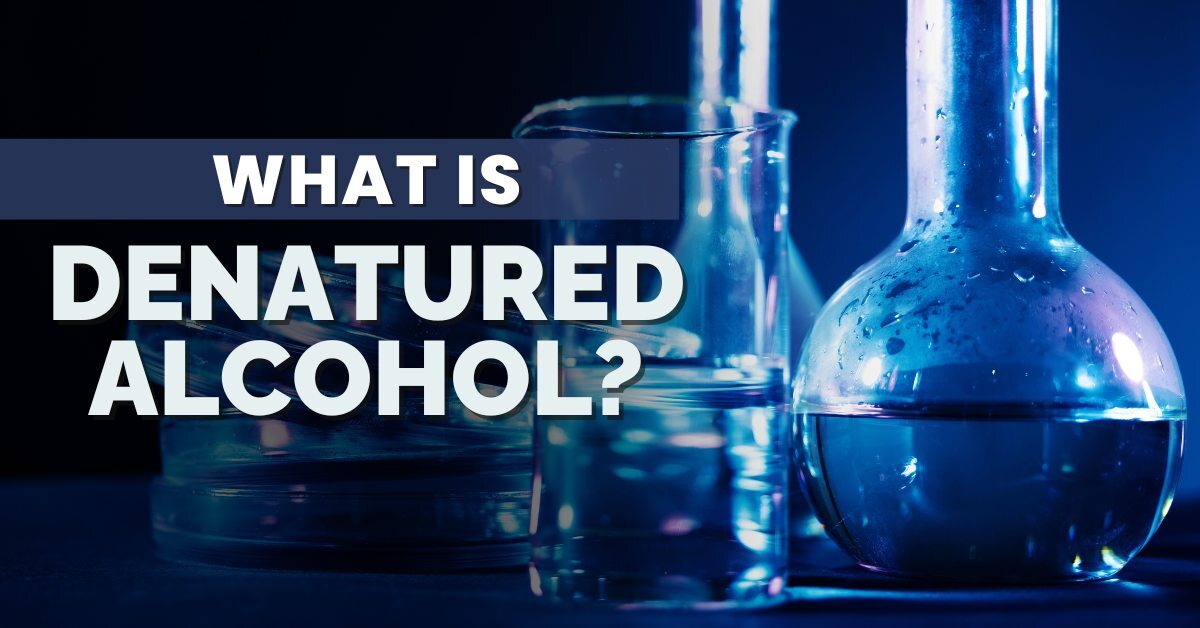
What Is Denatured Alcohol? Definition, Uses & More
- July 16, 2024
- 2710
- Alcohol
Whether you are recovering from an addiction or cannot purchase alcohol because of religious reasons, you may be wondering if denatured alcohol is suitable for you.
As a common ingredient in products ranging from skincare to woodworking items, you could find its presence concerning. Is it permissible, or would it trigger a relapse for you or someone in your family?
Here, we discuss ‘what is denatured alcohol,’ why it is so widely used, and whether it poses any risks. We will also explore top alternatives to alcoholic beverages, like Super Speciosa Super Feels.
What Is Denatured Alcohol?
Denatured alcohol is an effective solvent and preservative that is also known as methylated spirits. To “denature” something is to remove an essential quality. In this case, manufacturers remove the ability for a person to consume the alcohol i.e. they make the alcohol non-drinkable for people.
This is achieved by adding toxic ingredients like methanol and pyridine (also called denaturants) that taste and smell disgusting even in very low concentrations.
What Makes up Denatured Alcohol?
Denatured alcohol contains ethanol (traditionally known as “alcohol”) and several additives like methanol. Methanol is another type of alcohol which is extremely toxic and can cause blindness or even be fatal.
Other substances are added because of their toxicity and extremely unpleasant taste. Acetone, denatonium, and methyl-ethyl ketone are particularly potent, unbearable offenders. Some manufacturers add a dye to visually indicate that their product is not meant for drinking. Others still use ipecac syrup, which may be the “kindest” additive as it induces vomiting [1].
The Manufacturing Process for Denatured Alcohol
Manufacturing denatured alcohol involves adding unpleasant and dangerous additives to exempt ethanol from alcohol “sin” taxes.
The most common additive is methanol, which is generally added at a concentration of 5-10%. This gives denatured alcohol the name “methylated spirits,” or “metho” in Australia. Gasoline, benzene, pyridine, acetone, or even the bitter laxative castor oil are other potential additives [2].
These additives do not chemically change the ethanol molecule at all. Instead, they are mixed to create a foul-tasting, often toxic solution.
Uses of Denatured Alcohol
There are many industrial, cosmetic, and medical uses of denatured alcohol. You can find it in products ranging from stove fuel to facial toners.
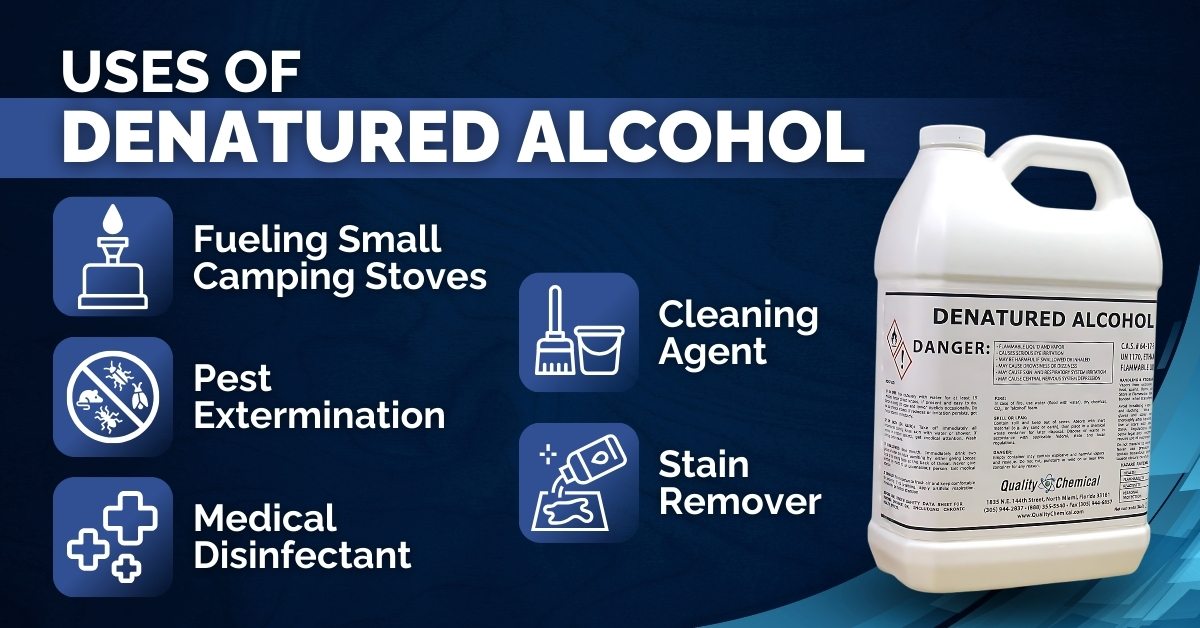
Cleaning Agent
Alcohol is a tried-and-true disinfectant for a very good reason. They disrupt the cell membranes of bacteria and break them apart. Denatured alcohol is popular for its antibacterial power, making it one of the most widely used ingredients in cleaning agents.
Additionally, denatured alcohol evaporates very quickly, enhancing its cleaning benefits. Alcohols used for cleaning often contain isopropanol. This is not just to make them toxic for humans; isopropanol is also a stronger antimicrobial than ethanol alone [3].
Fueling of Small Camping Stoves
If you love camping and boating, chances are you have cooked over a small stove. Denatured alcohol is a terrific fuel for this purpose: it burns very clean thanks to the shorter carbon chains, so you don’t need to worry about soot or respiratory irritation if you choose a quality brand.
You will see denatured alcohol for fuel sold under names like “methylated spirits,” “marine stove fuel,” or “alcohol appliance fuel.” They come in either plastic or metal cans, but you can empty some into a plastic container if you are hiking.
Stain Remover
Denatured alcohol is a powerful multipurpose solvent widely utilized in industrial and home cleaning. It is effective in removing paint stains and oil and is also an excellent degreaser. These benefits can also ensure better adhesion of paint and coatings; in case you’re wondering, “What is denatured alcohol used for in painting?”
Its properties make it an ideal choice for cleaning appliances and electronics, where it can tackle tough residues without leaving damage. You don’t need to worry about the solvent itself leaving a residue, as it will quickly evaporate. Streaks are less of an issue for this reason, too.
Pest Extermination
Denatured alcohol can act as an insecticide in both home and commercial formulations. For example, a mixture of 99.9% ethanol with 0.1% tertiary butyl alcohol and a small amount of denatonium benzoate is used to make pesticide reagents.
You can also buy denatured alcohol and dilute it as a home remedy for pests on some plants. The final formula must be 10-25% alcohol if you want to spray it on the entire plant. However, you can use 60-70% alcohol solutions in spot applications [4].
Medical Disinfectant
Denatured alcohol is an ingredient in hand sanitizers and soap. Both hand sanitizer and soap work in the same way: by destroying the membranes of both bacteria and viruses. There must be a minimum alcohol concentration of 60% for this to be effective.
Hand sanitizers contain different additional ingredients, which are more centered around killing bacteria and viruses than preventing drinking. It’s common to see isopropyl alcohol, hydrogen peroxide, or both. You may see triclosan, iodine, or ammonium compounds alongside moisturizing glycerol and essential oils with antimicrobial properties [5].
Cosmetics
If you’re asking, “What is denatured alcohol used for in cosmetics?” because of its toxicity to humans, it’s actually a common ingredient in skincare products.
Denatured alcohol is well-appreciated for its drying, refreshing, and antimicrobial properties. It plays a critical role in products like toners and aftershaves. Without it, these would be far less effective in disinfecting the skin and replacing greasy with a pleasant matte feel.
Woodworking
In the woodworking industry, denatured alcohol plays a crucial role in many tasks. Woodworkers value denatured alcohol for its ability to highlight wood grain, clean off pencil marks on raw wood, and provide a quick-drying solution that leaves no residue. You can ensure a pristine finish, perfect for selling your wares or improving your home.
Solvent
The versatility of denatured alcohol extends to its use as a recommended thinner and cleaner. It can effectively dissolve ink and various other stains, even those that do not dissolve well in water.
As a solvent, denatured alcohol can also make ingredients that do not normally mix in water form an even solution. This is useful for a wide range of products, from cosmetics to lacquers. Otherwise, you are likely to see ingredients separating and clumping together [6].
Why Is Denatured Alcohol Used in Skincare Products?
Denatured alcohol is used in skincare products primarily for its astringent and antimicrobial properties, which help in cleansing the skin, reducing oil, and preventing acne. It acts as a solvent, enhancing the absorption of other active ingredients into the skin. It also provides a quick-drying finish, which is beneficial for products like toners and lotions.
Is Denatured Alcohol Safe for Skin?
Denatured alcohol is safe for most people’s skin, but be cautious around broken or damaged areas. It’s also very drying unless you combine it with a moisturizer or apply one very soon after.
We do not recommend denatured alcohol for eczema-prone skin. This is because the skin barrier is more prone to water loss, so it will likely worsen the excessive dryness [7]. If this sounds like you, then witch hazel, rosewater, or glycerin-containing products may be better alternatives.
How To Identify Denatured Alcohol in Skincare Products?
If you’re asking, “What is denatured alcohol called in cosmetics?”, it’s usually listed as “alcohol denat.,” “denat. Alcohol,” or “SD alcohol.”
Effects of Denatured Alcohol on Different Skin Types
Denatured alcohol can be a helpful ingredient for very oily skin, especially if you intentionally or accidentally add oily substances to it. Here are other considerations
- If you suffer from acne, denatured alcohol may seem like a great idea to tame oily skin. However, excessive use can inflame or irritate your skin, which may trigger breakouts even if it is now less oily.
- Avoid denatured alcohol on dry skin, as it strips the natural oils that protect you from dryness.
- We also advise against it if you have sensitive skin because you need the protective effects of the natural oils and waxes.
- If you have combination skin, limit denatured alcohol-containing products to the oily T-zone, and avoid them in dry areas.
Is Denatured Alcohol Safe To Consume?
No, the primary purpose of denatured alcohol is that you cannot safely drink it. Here are some side effects it may cause if consumed:
Blindness and Neurological Damage
Methanol, one of the additives, can cause blindness and neurological damage. It causes fatalities by freezing cellular energy production, which shuts down all organs and tissues.
Even just 10mL of methanol can affect vision; 100-200mL is fatal. It’s rapidly absorbed but can stay in your body for up to a week, which is much longer than methanol. As nausea and vomiting appear first, methanol toxicity can look just like that from regular alcohol, but the more serious symptoms take 12-24 hours [8].
Skin and Eye Irritation
Skin and eye contact with denatured alcohol should also be avoided. It is classified as a Category 2 skin irritant and a Category 2A eye irritant. This means that exposure can cause serious skin burns and eye damage. Long-term exposure may worsen pre-existing skin, respiratory, and eye conditions.
Specially Denatured Alcohol vs Completely Denatured Alcohol
When researching what is denatured alcohol, you may see labels reading “completely denatured alcohol” and “specialty denatured alcohol.” Let’s explore these two options.
Completely Denatured Alcohol
Completely denatured alcohol is made so that separating the ingredients is extremely difficult. It has a specific manufacturing procedure. This can be different according to each country’s regulations. For example, European Union standards changed in 2013 to specify that every 100 liters of absolute ethanol must be combined with 3 liters of methyl-ethyl ketone, 3 liters of isopropyl alcohol, and 1 gram of denatonium benzoate [9].
British regulations, as of 2005, are quite different. Their legal formulation for completely denatured alcohol includes mixing 90 parts by volume of alcohol with 9.5 parts by volume of wood naphtha or a substitute. The final 0.5 part is made of crude pyridine [10].
Specially Denatured Alcohol
Specially denatured alcohols combine ethanol with additives that prevent consumption. As it’s possible for you to separate them, you need a license to buy industrial alcohol.
These contain a wide range of additives and feature them in different proportions. For example, SD 35A contains 95.38% ethanol and 4.64% ethyl acetate. If it sounds familiar, this is the denatured alcohol in spirit gum [11]. SDA 40B uses denatonium benzoate and tert-butyl alcohol and is known as “perfumer’s alcohol.” It is also used for ink and furniture varnish [12].
Precautions When Working With Denatured Alcohol
Denatured alcohol is far removed from drinking alcohol. To work safely with it:
- Do not allow denatured alcohol to come in contact with your eyes. If this does happen, flush your eyes with cool water for 15 minutes. To avoid permanent damage, seek medical attention if a large amount gets into your eyes or they are still irritated.
- Do not accidentally get a small amount in your mouth, even if it’s just in your hand. Wash your hands before eating, drinking, or touching your face if they have come in contact with denatured alcohol.
- Keep any product that contains denatured alcohol away from pets, and clean up any spill that they might try to lick.
- Unless you are using a product specifically made for indoor purposes, apply it only in a well-ventilated area or a garage with the door left wide open.
- Do not allow denatured alcohol-based products to come into contact with your skin or clothes unless they are made for such a purpose.
- If you need camping stove fuel and are flying to your destination, you should only buy fuel once you land, as you cannot carry flammable liquids under any circumstances.
- Remember that flames from denatured alcohol-based fuels are colorless and can burn if you do not know where they are.
- Always keep denatured alcohol away from heat, sparks, open flames, and hot surfaces. Store it in a tightly closed container in a cool, dry place to prevent accidental ignition or evaporation.
Alternatives to Alcoholic Beverages
If you’re looking for alternatives to alcohol for relaxation or socializing, kratom and CBD supplements are two popular options that many people are exploring. Both have unique properties and benefits. Here are some popular options to try:
1. Super Speciosa Super Feels
Looking to ditch the alcohol and find some deep relaxation? Super Speciosa Super Feels might be your answer. This drink combines kratom and kava extract in a single shot, offering a perfectly balanced dose for ultimate chilling.
Each serving packs 35mg of mitragynine and 25mg of kavalactones, so you can expect fast-acting relief for both your body and mind. Sign up for some serenity without the hangover!
User Reviews
Super Speciosa Super Feels has some mixed reviews, even though it boasts perfect scores on their website (with 75 reviews saying so). People love how it helps them unwind, raving about its relaxing effects on both mind and body. Some say it’s their favorite way to chill out. The downside? Not everyone’s a fan of the taste, and a few folks have found it a bit pricey.
>>Check the best prices for Super Speciosa Super Feels
2. FOCL Feel Good Drops
FOCL Feel Good Drops are like little pockets of sunshine in a bottle. These sugar-free drops are all about natural relaxation, thanks to a blend of CBD, THC, and plant terpenes. They’re perfect on their own, or you can add them to your favorite drink. These drops pack a powerful CBD dose and a gentle amount of THC for ultimate relaxation.
User Reviews
With a 4.8 out of 5 rating based on 20 reviews on their website, people like how the drops deliver as advertised. They mentioned feeling relaxed but focused and appreciated the easy dosing with the dropper. Some folks even say they taste good and are convenient to use.
However, a few reviewers were bummed that the drops have less THC than the FOCL gummies with the same name. Also, the price tag seems a bit steep for some, and the flavor, while okay, isn’t for everyone. Ideally, they’d prefer an unflavored option to mix into drinks.
>>Check the best prices for FOCL Feel Good Drops
3. Kratom Country Red Kratom Extract Shot
This alcohol alternative is made with the most concentrated Thai kratom extract you can imagine. It packs a whopping 150ml of pure mitragynine, the main active ingredient in kratom. This shot is designed for experienced users who want serious relaxation after a tough day or to unwind on their day off.
User Reviews
On the official website, it scores an average of 4.6 out of 5 stars. Customers rave about the effects, saying it gives them a ton of energy and helps them focus like a laser. Plus, they love how fast-acting it is – relief is almost instant. The downside? It’s not exactly cheap, and a few folks found the liquid form a bit pricey.
>>Check the best prices for Kratom Country Red Kratom Extract Shot
4. Kratom Country Red Bali Kratom Powder
This powder packs a punch with over 40 alkaloids, potentially offering pain relief, stress reduction, and even a mental boost. It’s a great alternative to their capsules and shots, letting you choose the perfect amount for your needs, with sizes ranging from 1 ounce to 30 ounces. Plus, the effects can last up to 8 hours, so you can unwind for a long while.
User Reviews
On the official website, customers love how effective it is, saying it gives them a surprising combo of feeling relaxed and energized. They also appreciate the fast shipping and variety of products to try. However, some miss the old rewards program that offered free kratom and store credit. Another reviewer found the powder a bit pricey. There was also a mention of an order not arriving.
>>Check the best prices for Kratom Country Red Bali Kratom Powder
5. Cryo Kratom Gold Extract
Cryo Kratom Gold Extract boasts supercharged mitragynine levels, making it one of the faster-acting alcohol alternatives. So, if you’re looking for immediate and long-lasting chills, this could be your golden ticket. You can add it to your post-workout protein shake to soothe sore muscles or mix it into a mocktail for a relaxed night out with friends.
User Reviews
Users on their website rave about its pain-relieving properties and focus-enhancing effects, even praising its taste over other kratom liquids. However, the reviews are mixed. Some consider it the best kratom ever, while others criticize the leaky, non-resealable ampoules and dizziness-inducing side effects.
>>Check the best prices for Cryo Kratom Gold Extract
6. Mitra 9 Variety Kratom Seltzer
This innovative alcohol alternative combines the natural benefits of kratom (45mg of Mitragynine, to be exact) with a refreshing, delicious seltzer. It comes in 7 tasty flavors and boasts zero artificial colors, flavors, or preservatives. Whether you’re craving a cool drink on a hot day or a pick-me-up with a healthy twist, Mitra9 promises relaxation and taste in a can.
User Reviews
Mitra9’s Kratom Seltzer sounds promising. It boasts relaxation and taste in a can with its kratom blend and 7 flavor options. However, their website only has positive reviews. For a more balanced perspective, it’s best to ask friends or look for reviews on independent websites.
>>Check the best prices for Mitra 9 Variety Kratom Seltzer
FAQs About Denatured Alcohol
Here are common questions people have about denatured alcohol.
Is Rubbing Alcohol and Denatured Alcohol the Same Thing?
No. Rubbing alcohol is 70% isopropyl alcohol and 30% water. It’s used for cleaning surfaces and disinfecting wounds. While you cannot drink it, it does not have the same range of uses as denatured alcohol. If you’re wondering, “What is the difference between denatured alcohol and isopropyl alcohol?” The two have different chemical formulas. Isopropyl alcohol is C3H8O, while ethanol is C2H6O.
What Is a Substitute for Denatured Alcohol?
Isopropyl alcohol can be used as a substitute for denatured alcohol for certain purposes, such as woodworking. However, its lower alcohol concentration means it can take longer to dry out. Betadine (povidone iodine) is a safe, strong disinfectant for first-aid purposes.
What Are Examples of Denatured Alcohol?
One example of denatured alcohol is SD Alcohol 35A, which is the solvent in the spirit gum and is used to attach costume accessories [11]. Perfumer’s alcohol is coded as SDA 40B.
Is Denatured Alcohol and Acetone the Same Thing?
No. Denatured alcohol and acetone are not the same thing. Denatured alcohol is ethanol that has additives to make it undrinkable and is often used as a solvent or fuel. It typically contains ethanol along with methanol, isopropanol, or other chemicals. Acetone, on the other hand, is a colorless, volatile liquid with high flammability. It is commonly used as a solvent in nail polish remover and for cleaning purposes.
Final Thoughts
Denatured alcohol gives you all the benefits, and possibly more, from regular alcohol. However, it is much cheaper as it’s unsafe for drinking and cannot trigger a relapse after an addiction. The additives may even boost the antimicrobial power of alcohol.
The answer to “What is denatured alcohol used for?” seems to be endless. You can find it in toners, perfume, furniture lacquers, varnish, stove fuel, and cleaning products. Perhaps the most famous use today is in hand sanitizers, which got us through the COVID-19 pandemic.
For those looking for alternatives to alcoholic beverages, products like Super Speciosa Super Feels offer a non-alcoholic option that doesn’t compromise social or celebratory rituals.
>>Try Super Speciosa Super Feels now
References
- “Alcohol Specifications.” The Online Distillery Network, www.distill.com/specs/EU2.html. Accessed 20 June 2024.
- Bekatorou, A. “Alcohol: Properties and Determination.” ScienceDirect, Academic Press, 1 Jan. 2016, www.sciencedirect.com/science/article/abs/pii/B9780123849472000179. Accessed 20 June 2024.
- Salvage, Richard et al. “Use of 70% alcohol for the routine removal of microbial hard surface bioburden in life science cleanrooms.” Future microbiology vol. 9,10 (2014): 1123-30. doi:10.2217/fmb.14.73
- “Rubbing Alcohol as an Insecticide | Hunker.” Hunker, 2010, www.hunker.com/13406091/rubbing-alcohol-as-an-insecticide.
- Jing, Jane Lee Jia et al. “Hand Sanitizers: A Review on Formulation Aspects, Adverse Effects, and Regulations.” International journal of environmental research and public health vol. 17,9 3326. 11 May. 2020, doi:10.3390/ijerph17093326
- The Editors of Encyclopedia Britannica. “Solvent | Chemistry.” Encyclopædia Britannica, 7 Feb. 2011, www.britannica.com/science/solvent-chemistry.
- Danby, Simon G et al. “Enhancement of stratum corneum lipid structure improves skin barrier function and protects against irritation in adults with dry, eczema-prone skin.” The British journal of dermatology vol. 186,5 (2022): 875-886. doi:10.1111/bjd.20955
- Shafi, Humera, et al. “Eight Fatalities due to Drinking Methanol-Tainted Alcohol in Pakistan: A Case Report.” Egyptian Journal of Forensic Sciences, vol. 6, no. 4, Dec. 2016, pp. 515–519, https://doi.org/10.1016/j.ejfs.2016.06.004. Accessed 4 Apr. 2020.
- Commission Implementing Regulation (EU) No 162/2013, eur-lex.europa.eu/LexUriServ/LexUriServ.do?uri=OJ:L:2013:049:0055:0061:EN:PDF. Accessed 20 June 2024.
- “The Denatured Alcohol Regulations 2005.” Legislation.gov.uk, 2011, www.legislation.gov.uk/uksi/2005/1524/contents/made.
- “Mehron Spirit Gum Liquid Adhesive.” Camera Ready Cosmetics, camerareadycosmetics.com/products/mehron-spirit-gum-liquid-adhesive. Accessed 20 June 2024.
- SDA 40B Specially Denatured Alcohol | Perfumers Alcohol. 5 July 2023, simplesolvents.com/product/sda-40b-specially-denatured-alcohol/?attribute_pa_proof=200-proof&attribute_pa_size=270-gallon-tote. Accessed 20 June 2024.



